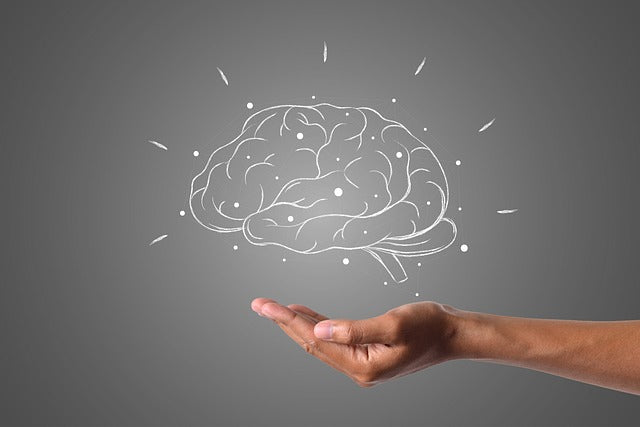Toxins in air pollution are widespread and can damage our health—and the health of our children—a sweeping new study warns. The new research maps air pollution for nearly 90,000 schools across America and finds widespread exposure to airborne toxins, including mercury and other metals.[1] These toxins can build up in our bodies and are associated with increased risk of diabetes, cardiovascular disease, Alzheimer's disease, respiratory disease, autoimmune conditions, and many other conditions.[2], [3]
We truly do live in toxic times. Almost all of us are walking around with measurable levels of mercury and bisphenol A (BPA) in our urine. Toxins can accumulate within tissues and cells, burden our antioxidant defenses, and lead to chronic inflammation and leaky gut syndrome. An inflamed and leaky gut further allows toxins to slip into the bloodstream and trigger a systemic inflammatory response.[4] It is the classic vicious circle.
Optimal health is built by supporting our body's built-in, profound detoxification abilities on a regular basis. Ideally, this is a lifelong approach, not simply a quick 3- or 7- or 10-day detox diet like those popularized by well-loved sources such as Dr. Oz or Prevention Magazine.
Effective daily detoxification hinges on a simple but profound insight into the way our body cleanses and replenishes itself. Quite simply: we push toxins out of the cells and then catch and bind them before they have a chance to do further damage. Push and catch. Though it might sound like a quirky new sports game, push and catch is actually a deep way of reconceptualizing how our bodies manage toxic exposures. We want toxins to be safely flushed out of cells and circulation through the liver into the large intestine, and out through the kidneys into the bladder.
Your Liquid Gold
Our body has a natural answer for toxins—and that is bile, the liver's liquid gold. Bile is produced by your liver and stored in your gallbladder, and is essential to healthy digestion and effective detoxification.[5] Toxins flow with bile out of the liver and into the gallbladder, and then into the gastrointestinal tract, where they are bound into stool and excreted.[6] Stagnant bile flow impairs that precious process: think of the difference between rushing white-water rapids and a slow-moving, muddy river.
Even those blessed individuals with healthy bile flow can be overwhelmed when exposed to excess pollution, or when they intentionally ramp up their detoxification processes. Detoxification can be stimulated through vigorous exercise, therapeutic sweating in saunas, lymphatic massage, changes in diet, or the judicious use of herbs, chelating substances, and nutraceuticals.
Bitter herbs are classic remedies for stimulating the flow of bile and the mobilization of toxins. The moment bitters touch our tongue they send signals directly to our body and brain. That is because we have a few dozen different receptors that detect bitter molecules—and these receptors are so important they line our tongues, lungs, heart, intestines, even our genitals.
Bitters open the gates of detoxification and let the bile flow. These herbs have a long history as tasty aperitifs and digestifs sipped before or after meals to stimulate digestion. Bitter herbs such as dandelion, gentian, solidago, milk thistle and others, help stimulate production of bile as well as increase bile flow, and support the organs of detoxification—the liver, gallbladder, kidney and urinary tract. Essential oils such as myrrh and clove also stimulate bile flow, and are antimicrobial and anti-inflammatory.
In addition, phosphatidylcholine, the main lipid that forms cell membranes, is an essential component of bile and can improve excretion of bile and toxins.[7]
All these aids may be regarded as the 'push' phase of detoxification. But 'push' alone is not enough. When toxins are rapidly mobilized they can spill back out of the bile into circulation again, only to be stored anew in tissue and fat. Rashes, brain fog, aches and pains, and fatigue may result.
Playing Catch
It benefits us to first push toxins out of our cells, and then efficiently 'catch' them after they've been released. One powerful and yet gentle way to do that is with a coordinated mélange of broad-spectrum binders.
There is no universal binder that has an equal affinity for all toxins—the common metals, pollutants, mold, and bacterial toxins, plastic residues, flame retardants and more that we encounter daily. A blend of carefully calibrated binders can capture an impressive array of toxins. Binders such as clay and charcoal have been trusted remedies for thousands of years. Newer substances such as chitosan (a highly purified long-chain sugar made from the shells of shrimp) or unique proprietary binders can latch onto toxins and prevent them from recirculating. Binders can sometimes contribute to constipation, and it can be useful to offset this with additional health-promoting molecules that bulk up the stool, soothe the intestinal lining and support gut motility. Fibers like acacia gum, and soothing molecules like aloe vera, can be mixed into a universal binder blend for optimal effect.
With a rapid delivery system, such as nanoscale lipid-based liposomal deliveries, it is possible to rapidly stimulate bile flow with bitters (push) and then, shortly after, follow with a universal binder blend (catch).This effective approach can be utilized daily, helping to avoid common 'detox' and 'die-off' symptoms.
Push and catch. These two simple concepts can reinvigorate your daily approach to detoxification.
You may also be interested in:
Mercury: A Potent Toxin with Widespread Health Impacts
Small But Dangerous Air
Sperm Counts Are Plummeting, And Researchers Think They Know Why




